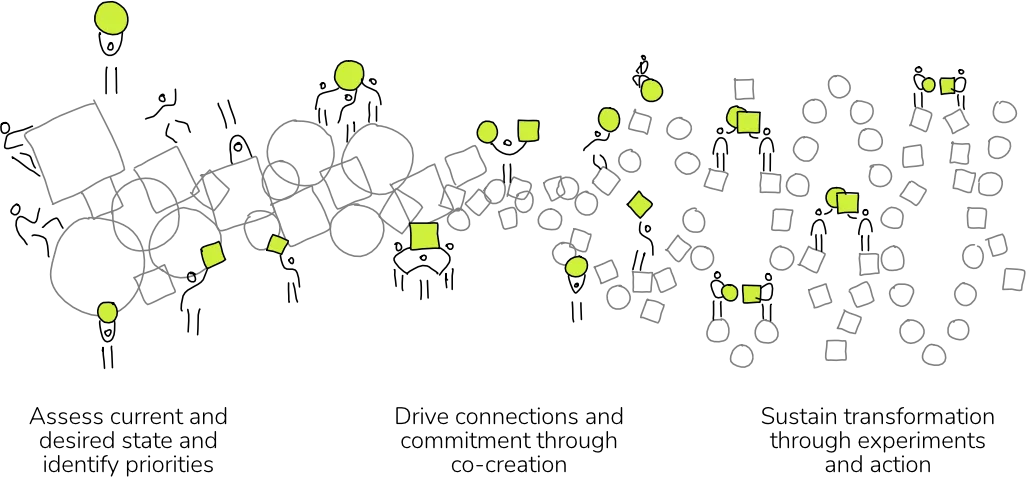COLLABORATION
two or more people working together to create or achieve something.
DESIGN
the discipline of imagining, planning, and creating objects or systems with specific purpose in mind.
COLLABORATION DESIGN
the discipline of imagining, planning and creating ways for two or more people to work together effectively to achieve shared goal
Collaboration design
We work with business and organisational leaders to help build culture and capability through designing collaboration fitting current context and state of the team and business.

How we can help design collaboration?
The world of work has changed. It is time to change with it. Drastic and rapid change is causing confusion. If you have people who don’t talk to each other, teams that work in silo, stalled projects with unclear goals or next steps, meetings where conversations spin in circles… you need collaboration design.
When designed, the experience of working together brings many benefits for people and business. Organisations that pay attention to collaboration design are twice as likely to outgrow their competitors, while their employees saw gains in efficiency, quality of work, innovation, and overall job satisfaction. Deloitte
When do you need collaboration design?
In many workplaces today collaboration is too often left to chance. Leaders hope that bringing the brightest minds together and relying on their professional capacity will improve productivity and business outcomes. But that is proven to not work. Brightest minds especially, need designed and facilitated experience to work effectively together.
Collaboration needs to be designed when a group of people is coming together to achieve something. This can be a desire to do things faster, improve something, learn or implement something new, or create something new from scratch. In real life work examples: when a business wants to grow, when a new team or project is starting, when projects are stalled, when a group of people needs to solve problems together.
What is effective collaboration?
Effective collaboration is all about people, therefore it is difficult and it takes a lot of effort. More people get involved, the more complex it becomes. And the more you want to get out of it, the more processes need to be in place. To achieve effective collaboraiton you need to balance people’s needs and right methods.
Effective collaboration is not just a process to achieve result, but first of all a philosophy of interaction with other people who need to create deep shared understanding about collaboration effort, and have clarity and provisions to make individual contributions.
People need to feel valued, heard, and respected and be ready, willing, and able to use the tools and methods to contribute.
Who designs collaboration?
Most organisations today don’t have dedicated roles or departments for collaboration design. Collaboration between teams, and often within the team, is left to chance. People join a new workplace without any guidance on what are proper ways of communicating, discussing, sharing perspectives, making decisions.
However, there are people tasked with coordinating tasks, and rallying people into meetings to make decisions and get the work done, like team or project managers. There are people tasked with making technology work for the business and implementing best practices. There are people tasked with making sure goals are achieved, like business leaders and heads. But there is no one tasked with taking care of how people feel when collaborating, what process they use and enable, and what role technology plays in the collaboration.
This is often left to invisible forces and described as workplace culture. Too often leadership skills and lack of culture is blamed for inefficiencies. But culture is built through actions and behaviours, not through talk. Therefore there should be people who take care of collaboration design and propose and facilitate ways of working that are in sync with the needs of the people, technology, and business outcomes. That role can belong to anyone with the desire to improve their workplace and help people work better together.
EXPLORE OUR LATEST PROJECTS

Facilitated People, Process, And Technology Alignment for Greenpeace East Asia
See how we helped leaders at Greenpeace East Asia align their perspectIves and co-create a change roadmap to accelerate and sustain their digital transformation journey.

